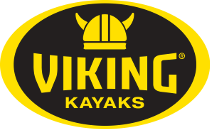Anticipation and flattened barbs
10:59PM 30th Nov 13
Here’s a nice fat Northland snapper about to go back in the water. Careful handling and the use of hooks with flattened barbs means these fish are returned in the best possible condition. Note the dive glove on my left hand to make handling fish easy.
This is the time of the year when anticipation reigns. The days are lengthening, water temperatures are rising (hopefully), and the fishing is about to take on a whole new character. One of the seasonal markers I use is the kowhai. Much to some of my mates’ amusement I watch for the bright yellow flowers to break into full bloom as an indicator I should be chasing the first runs of hapuku into shallower waters. This also seems to coincide with superb deep water snapper fishing, adding value to the long paddles off the coast.
The next marker is when all that yellow is splattered over the ground and there’s not a flower left on the trees. For me this is when I expect to encounter the first serious runs of schooling snapper heading into the likes of the Bay of Islands and Bream Bay. Everything heats up and the prime specie for many kayak anglers is suddenly rampaging around in packs snaffling everything in sight! Not only is the fishing superb, the snapper are building condition for spawning and are at their very best as excellent table fare.
Keeping the rod bent is all that’s required to stay attached to fish on barbless hooks
Ok, so why am I so excited about something that happens every year? Aside from the fun and anticipation of waiting for the action to kick off it’s a great opportunity to set up to try new tackle and techniques. Sometimes we need to remind ourselves that the best possible time to experiment is when we KNOW our targets are present, and are willing to pounce on what we offer if we can present it correctly.
All too often it’s easy to get caught up in the action, stick with the familiar, and only drag out something new when the bite dies off and nothing else is working. Unfortunately this isn’t a fair test and it can be impossible to decide if the lack of action is due to poor technique (after all, it may be the first time we’re trying it), the lure or system isn’t of interest to the fish, or simply that our quarry is now in rest mode and can’t be convinced to strike anyway. It’s far better to swap over in the midst of the action to get a clear cut answer if the new tackle or technique is effective.
Flattening hook barbs is as simple as pinching them closed with a pair of pliers. This is often done on lure hooks but also works well when bait fishing, just keep the pressure on the fish and don’t slack-line it.
Consider flattening those barbs
It’s often difficult to overcome the “if it aint broke, don’t fix it” mentality, especially in the fun and excitement of having fish boated to the side of the cockpit. Nearly all of us have been using barbed hooks from the time we first started fishing. I certainly grew up with the understanding that a decent barb was essential to landing fish. Barbless hooks – they must surely mean many dropped and lost fish!
Over the years I occasionally dabbled with barbless hooks for bait fishing and closing the barbs on the trebles rigged to many of my lures. I’ve been a slow learner, but I’ve come to a few realizations based on these brief forays into risky territory, not the least being that I dropped very few fish! Over the last couple of years I’ve been regularly alternating between barbed and barbless tackle and have made a few observations.
The biggest is that as tackle has evolved to suit soft baiting and other lure fishing techniques many of us are now fishing with lighter weight and longer rods. These allow longer casts, better bait and lure presentations, and most significantly make it much easier to keep pressure on the fish. This means that most of us are now considerably better at not slack-lining fish. By avoiding this sin and keeping pressure on the fish having a barb on the hook becomes irrelevant, even when bait fishing.
Moving to barbless rigs (or flattening the barbs) offers a couple of advantages. The first is that it’s much easier to set the hooks. In fact when stray-lining with braid the fish pretty much hook themselves (provided hooks are sharp). The “strike” I now do is simply to lift the rod and remove any belly in the line to get connected to the fish; the aggressive rip-wind-rip has almost become history.
The second big advantage with using barbless hooks is that it’s dramatically easier to release fish. Not having to use as much force to slide the hook(s) out means less damage at the hook site, it also means that fish don’t have to be held as tightly. In turn this greatly reduces the risk of internal damage and disruption to scales and the slime coat. In fact removing barbless hooks when kayak fishing is so easy many of the fish I release never leave the water, it’s fast and easy to reach out with a pair of pliers and roll the hooks out without any other handling.

Now is the time to try new tackle and techniques. At the recent Coromandel Gold Rush kayak tournament one angler from Taranaki grabbed one of these jigs, and despite it being the first time he’s used them, caught almost all his fish on it!
When fishing barbless trebles on lures there’s the obvious safety advantage of making hooks easier to extract from rigging, clothing, or yourself if they’re flailed around by a fish landed into a kayak cockpit. This could also be a valid reason for going barbless on our other hooks for paddlers regularly encountering surf. I’m aware of at least one South Island and two North Island anglers who have been pinned by hooks bait rigs after “turtling” in the surf. At least one resulted in a series of events that could easily have been life threatening!
There’s just one area where I have reservations about using barbless hooks (though hooks with small barbs work well), jigging with metal jigs and assist rigs. I’m still experimenting but my concern is with having fish thrash around enough for the weight of the jig to create a brief slack line incident and allow the hook to drop free. On the plus side this does make it easier for any lost fish to throw the hardware free. Finding an answer for this question is currently a great excuse to spend more time on the water!
This spring give barbless hooks a go. Once you have a couple of fish on ice to take home, grab a pair of pliers and pinch the barbs closed. It’s as simple as that. Provided you remember to keep the rod bent (don’t slack line the fish) you’ll probably be amazed at well this works. It will also be amazing how much less time you’ll spend trying to extract hooks, and as a result how quickly you can have baits or lures back in the water again!
Tackle-Pods on kayaks now make it easier to manage gear on kayaks, especially when setting up and breaking down at the start and end of each day.
New Toys
I’ve added Tackle Pod accessories to the cockpits of my kayaks. These make tackle logistics much easier, especially when setting up before hitting the water and packing up at the end of the day. In the context of trying new gear they make it easy to pre rig and stow everything a day or two prior to an on-water session so there’s no fumbling around or forgotten kit in the scramble to get on the water.
The Wet Tackle Pod for the Profish 440 is proving the ideal way to deal with lures and tackle that have been in the water. As clean fresh terminal gear is taken from tackle boxes and added to lines, anything wet and salty being removed is going into a separate compartment and not back amongst dry tackle. Back at home all the salty kit is in one place and is easy to rinse several times inside the pod before being removed and dried.
Written By Stephen Tapp for the NZ Fishing News magazine, read more of Stephens Fishing News articles HERE





